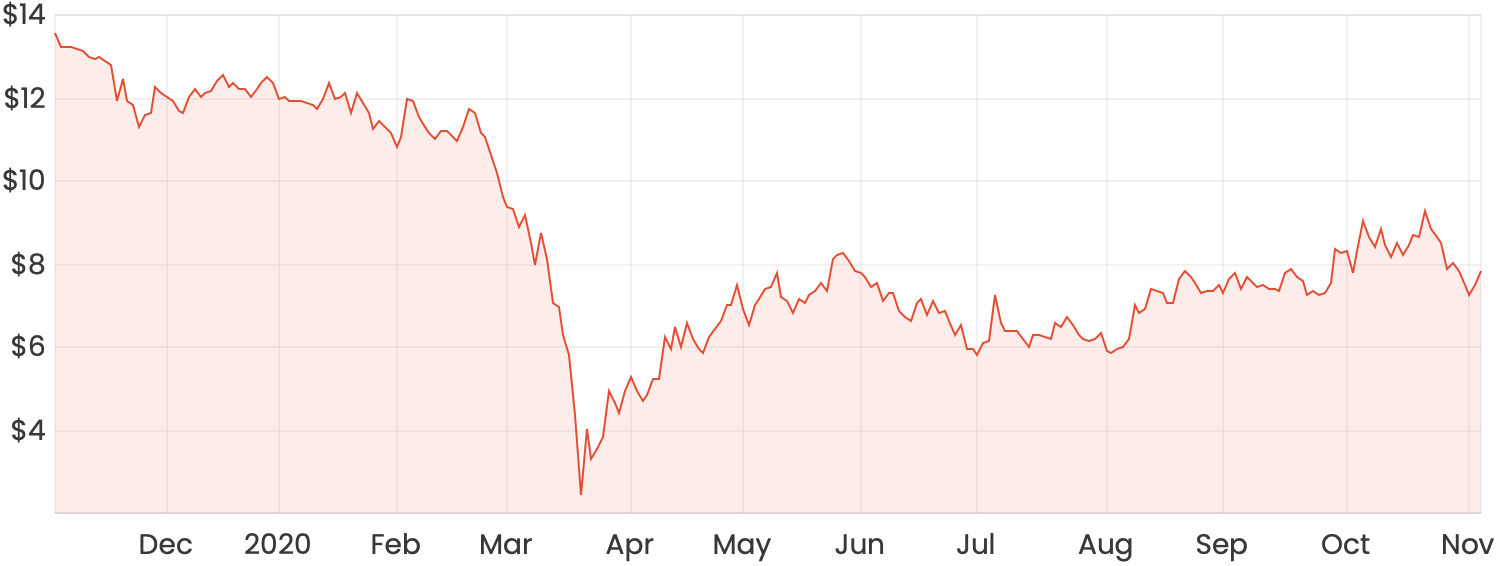Like many other ASX bricks and mortar retailers, the Lovisa Holdings Ltd (ASX: LOV) share price has made a strong recovery since its March lows.
At the time of writing, Lovisa shares are trading at around $7.50, albeit still 36% lower than their February highs.
Here are a few ways I analyse Lovisa and reasons why it’s done so well for shareholders in recent years.
LOV share price chart

What does Lovisa do?
Lovisa is a retailer of fast fashion jewellery and accessories with 449 stores across 11 countries worldwide. The company has a vertically-integrated business model, through which it designs, develops, sources and distributes products under the Lovisa brand name.
In 10 years, Lovisa has seen some rapid expansion and has been able to grow its revenues from $25 million to $250 million. It continues to execute its globalisation strategy through the roll-out of new stores across multiple countries.
Recent performance
The current Lovisa share price is a reflection of the ongoing uncertainty surrounding COVID-19. Unlike retailers that only operate within Australia, such as JB Hi-Fi Limited (ASX: JBH) and Temple & Webster (ASX: TPW), Lovisa has a large international presence. As a result, COVID-19 lockdowns could result in further lost revenue in affected areas.
Similar to ASX travel shares, the performance of these types of companies are entirely dependent on the economic recovery and when things turn back to “normal” – whatever your definition of that may be.
Looking back at recent financial performance prior to COVID-19, I noticed between FY18 and FY19, Lovisa was able to grow its revenue from $217 million to $250 million, however, was only able to grow net income from $36 million to $37 million.
Initially, this was concerning, but after digging through some of the management commentary, this was the result of investing “ahead of the curve” to support the rollout of 64 new stores and the introduction of new senior management roles.
What’s to like about Lovisa shares?
One of the first things you’ll notice about Lovisa’s financials is its profitability ratios – in particular, its gross margin. For years, Lovisa has been able to achieve a gross margin of around 80%.
Usually, businesses that sell products on such high margins do so because they lack volume (turnover). For example, jewellery or luxury cars.
What you’ll find with Lovisa is that it has extremely high gross margins and an extremely high asset turnover. Asset turnover essentially compares the revenues generated to the assets that the business uses to generate these revenues.
Let’s compare Lovisa to a company like Michael Hill International Ltd (ASX: MHJ), which sells more expensive jewellery but with less volume. Lovisa gets the same benefit of having a large gross margin like Michael Hill, but has the ability to generate significantly more sales. So on a per-store basis, Lovisa stores are highly cash generative compared to its peers.
The result of these two impressive qualities is an even more astounding return on invested capital (ROIC) of around 23.7%.
As an investor, this metric is extremely important. If a company struggles to make significant returns on the money it’s invested in its business, as a shareholder, there would be no rational reason as to why you would be able to earn returns in excess of the company’s returns.
What could go wrong
A large part of Lovisa’s future growth strategy is to simply build new stores on a global scale, as it knows this has been profitable in the past. The main risk here is that future stores may turn out to be a lower value proposition than anticipated, through a combination of either COVID-19 shutdowns or direct competitors that compete for market share.
Lovisa’s economic moat is moderate, in my opinion. Retail generally has low barriers to entry, however, I do think the Lovisa brand is well established and having a strong bricks and mortar presence is advantageous when combined with a strong online offering.
Final thoughts
Prior to COVID-19, Lovisa shares were trading on a trailing price-earnings ratio of around 21.
If you base this ratio off Lovisa’s FY20 results (which comprised significantly lower earnings due to COVID), you’ll calculate a P/E of 73. This current high price tag is basically the market assuming Lovisa can achieve its pre-COVID net income levels and then even more on top of that.
Lovisa is obviously a quality business, but keep in mind it’s entirely possible to do badly on an investment if you pay too much for it. Ideally, you would’ve wanted to pick up Lovisa shares in March or April this year.
If you’re buying at current prices, you’d need to able to accept the risks that the business faces in the short-term surrounding potential economic downturns in areas that it operates in.
For an ASX retailer I’m more interested in at the moment, check out this article: Why Accent Group is my favourite ASX retail share right now




